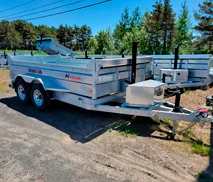Short Radius Bends
Pipe fittings play an important role in the plumbing, heating and cooling, and construction industries. One of the most commonly used types of pipe fittings is the bend. Bends are used to change the direction of a pipe’s flow and can come in a variety of types and sizes. Two of the most commonly used types of bends are short radius bends and long radius bends. Short radius bends, also known as “tight radius” or “1D” bend, have a radius that is equal to the diameter of the pipe, making them more compact than long radius bends. Long radius bends, also known as “2D” bend, have a radius that is twice the diameter of the pipe, making them larger and less restrictive than short radius bends. In this article, we will discuss the uses of short-radius bends, the differences between short-radius and long-radius bends, how to identify a 90-degree long radius bend, and whether short-radius return bends are prone to cracking. We will also consider the cost of production of a certain type of bend in India and China.
What are short radius bends used for?
Short radius bends, also known as “tight radius” or “1D” bends, are pipe fittings that are used to change the direction of a pipe’s flow. These bends have a radius that is equal to the diameter of the pipe, making them more compact than long-radius bends. They are commonly used in tight spaces or in applications where space is limited.
What is the difference between short-radius bends and long-radius bends?
The difference between short-radius bends and long-radius bends is the radius of the bend. Long radius bends, also known as “2D” bend, have a radius that is twice the diameter of the pipe, making them larger and less restrictive than short radius bends.
How do you identify the 90-degree-long radius bend?
A 90-degree long radius bend can be identified by its shape and size.
- Shape: It is a bend that makes a 90-degree angle, which means that the pipe changes direction by 90 degrees. This is a common angle for pipe fittings and can be easily recognized by its geometric shape.
- Size: The radius of the bend is twice the diameter of the pipe, which means that the bend is larger and less restrictive than a short radius bend. This is the key characteristic of a long-radius bend, which allows it to be easily distinguished from a short-radius bend.
To identify a 90-degree-long radius bend, you can measure the radius of the bend and compare it to the diameter of the pipe. If the radius is equal to twice the diameter, then it is a long radius bend. Additionally, you can also look at the angle of the bend and if it’s 90 degrees then it is a long radius bend.
It’s important to note that the process of identifying a 90-degree-long radius bend is not always straightforward, especially if you don’t have proper measurement tools or if the pipe is already installed and you can’t access it easily. In those cases, it’s recommended to consult with a professional or an expert to identify the type of bend you have.
Does the short radius return bend crack easily?
Short-radius return bends, also known as “180-degree return bends,” are known to be more prone to cracking than long-radius return bends. This is because they have a smaller radius, which puts more stress on the pipe and increases the risk of failure. However, if the material is strong enough, it can resist stress.
How many short radius 180 return bends does Bahrain import?
It is not possible to determine how much Bahrain imports short radius 180 return bends, as this information is not publicly available.
Which country is more affordable to produce a 45-degree-long radius bend: China or India?
When it comes to producing 45-degree-long radius bends, India is generally considered to be more affordable than China.
Cost of Production: The cost of production in India is generally lower than in China, which helps to keep the cost of pipe fittings down. This is primarily due to the lower cost of labor and raw materials in India. Additionally, India has a well-developed manufacturing sector, which allows for greater efficiencies and economies of scale.
Quality: The quality of the bends produced in India is often considered to be higher than those produced in China. This is because Indian manufacturers have a reputation for producing high-quality pipe fittings that meet international standards. Additionally, Indian manufacturers are known for their strict adherence to quality control procedures, which helps to ensure that the pipe fittings they produce are of the highest quality.
Infrastructure: India has a better infrastructure for the production of pipe fittings, which helps to keep costs down. This includes well-developed transportation networks, which makes it easier to transport raw materials and finished goods, as well as a large number of skilled workers.
In summary, India is more affordable to produce 45-degree long radius bends than China due to the lower cost of production, better quality, and better infrastructure for the production of pipe fittings.
- Share

YOU MIGHT ALSO ENJOY
Exploring the Best Deals on Cobra Usagé and Midland Usagé Radios
Stephen Romero - October 31, 2025
Discover Your Dream Home: Properties for Sale in Saint-Sauveur
Stephen Romero - October 31, 2025
ברי מים ומכונת קפה – הדרך המושלמת לשדרוג חוויית השתייה בבית ובמשרד
Stephen Romero - October 31, 2025
search
FAST ACCESS
- art&gallery (4)
- Automotive (25)
- beauty (6)
- blog (237)
- Business (547)
- cleening (13)
- clinic (1)
- courier services (4)
- dentel care (6)
- Driving school (3)
- electronics (1)
- events (1)
- forests (11)
- gameing (5)
- Health (25)
- Health & Fitness (217)
- Home & Garden (16)
- Landscaping (1)
- Law (16)
- Lifestyle (9)
- machinery (5)
- Real Estate (9)
- Share Market (15)
- Shopping (5)
- Technology (30)
- tool (2)
- toys (2)
- Travel (28)
- Wedding & Events (322)
must read
ברי מים ומכונת קפה – הדרך המושלמת לשדרוג חוויית השתייה בבית ובמשרד
Stephen Romero - October 31, 2025
Exploring Port Carling Cottages for Sale: Your Gateway to Muskoka Luxury Living
Stephen Romero - October 31, 2025
Trouver la meilleure “Trailer à vendre” avec Remorque de l’Isle : qualité, performance et fiabilité
Stephen Romero - October 31, 2025
recent post
ARCHIVES
- October 2025 (100)
- September 2025 (166)
- August 2025 (164)
- July 2025 (150)
- June 2025 (173)
- May 2025 (99)
- April 2025 (1)
- March 2025 (8)
- February 2025 (9)
- January 2025 (8)
- December 2024 (25)
- November 2024 (40)
- October 2024 (11)
- September 2024 (1)
- July 2024 (10)
- June 2024 (11)
- May 2024 (31)
- April 2024 (15)
- March 2024 (19)
- February 2024 (6)
- January 2024 (7)
- December 2023 (11)
- November 2023 (1)
- July 2023 (13)
- June 2023 (21)
- May 2023 (27)
- April 2023 (23)
- March 2023 (16)
- February 2023 (31)
- January 2023 (27)
- December 2022 (11)
- November 2022 (12)
- October 2022 (11)
- September 2022 (11)
- August 2022 (14)
- July 2022 (13)
- June 2022 (19)
- May 2022 (17)
- April 2022 (10)
- March 2022 (12)
- February 2022 (8)
- January 2022 (9)
- December 2021 (19)
- November 2021 (4)
- October 2021 (6)
- September 2021 (4)
- August 2021 (4)
- July 2021 (10)
- June 2021 (6)
- May 2021 (2)
- April 2021 (2)
- March 2021 (45)
- August 2020 (31)
- July 2020 (30)
- June 2020 (29)










